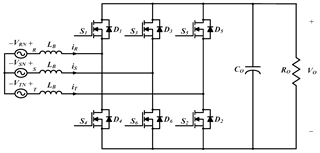Hello there, We are going to design 24 KW 6 switch bidirectional PFC so that in the TIDA-01606 ref design there is a SVPWM function that TINV_updateSVPWM(TINV_vInv_dq0.a, TINV_vInv_dq0.b,TINV_vInv_dq0.c);
I want to use this function in ref design of lab7, could you help us how to use SVPWM function for 6 switch pfc..


